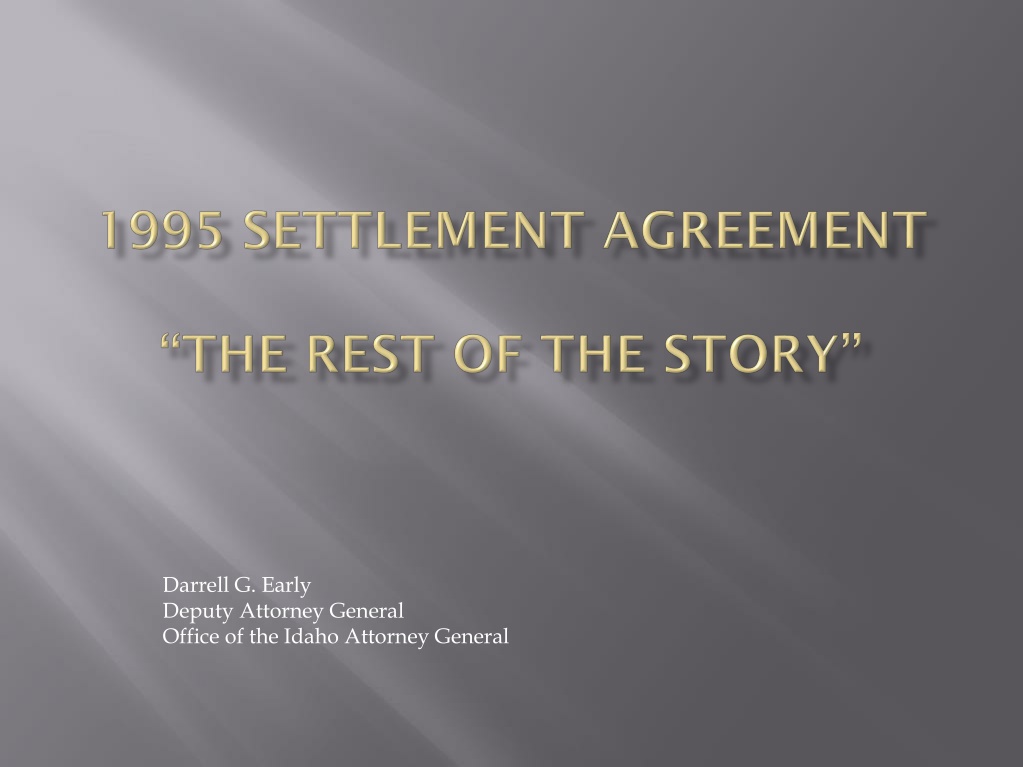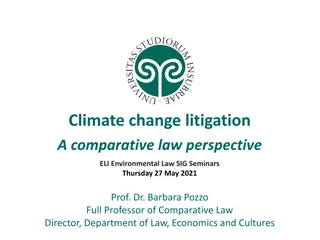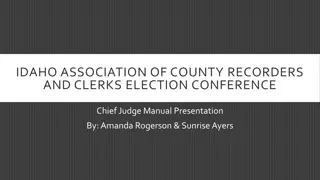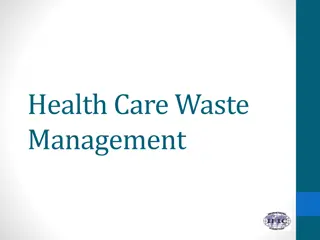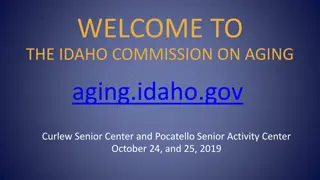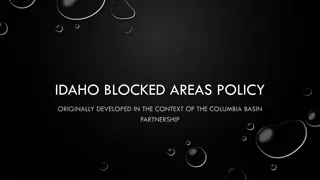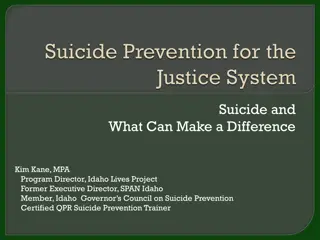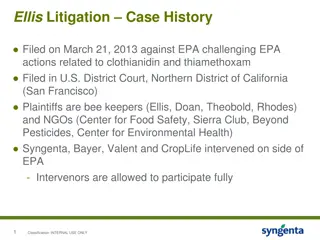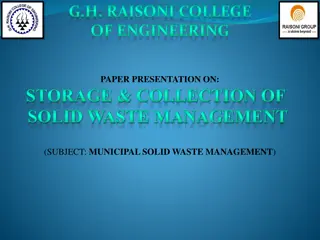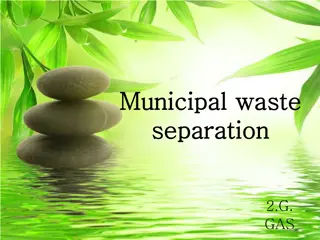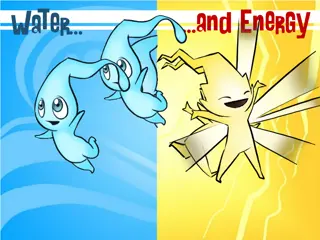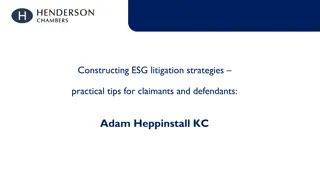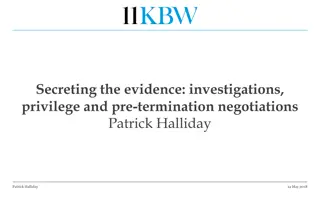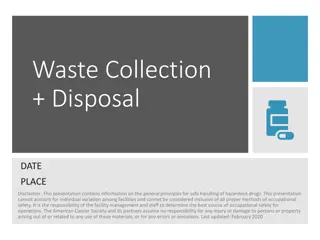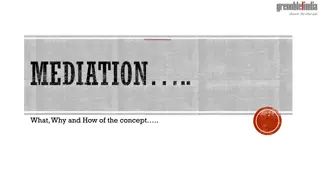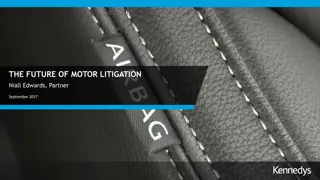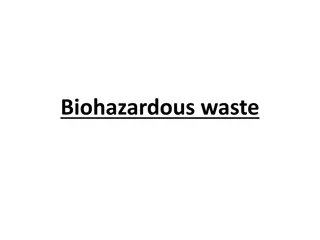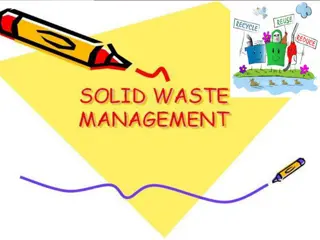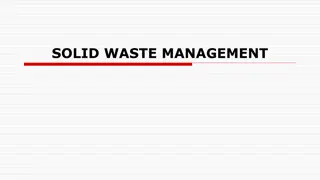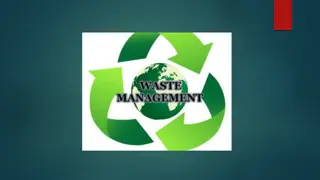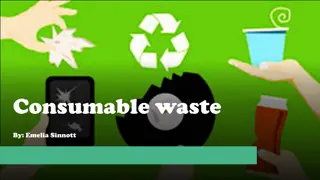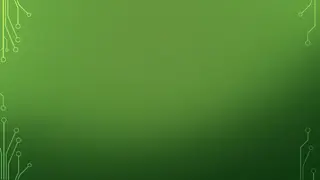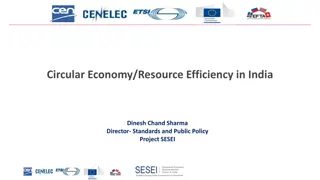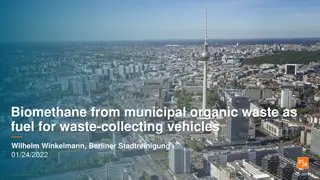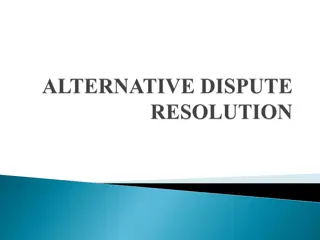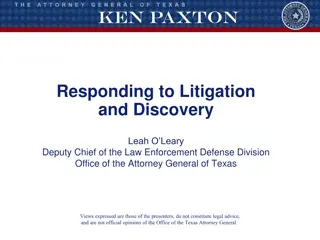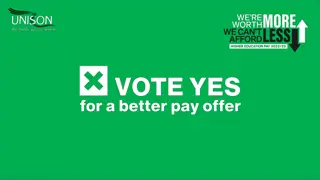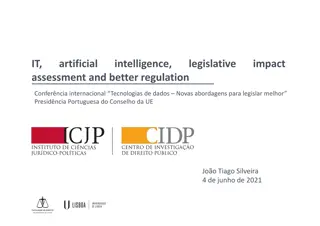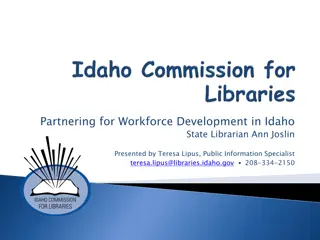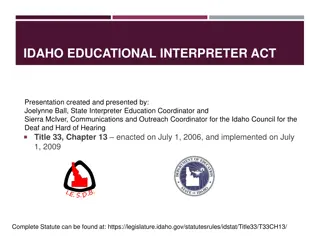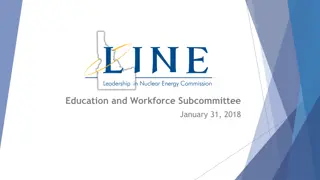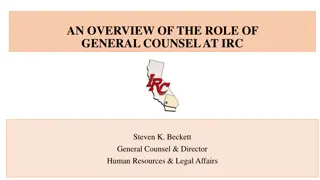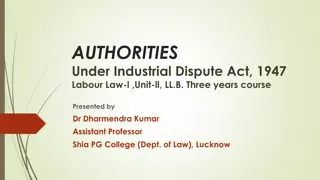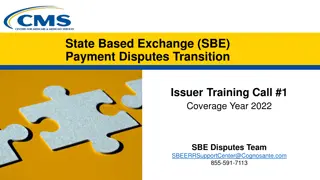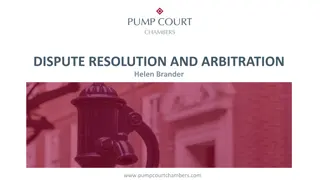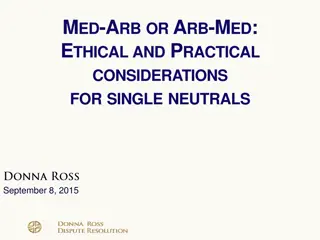Legal Dispute Over Buried Waste Litigation in Idaho
Legal battle involving the Deputy Attorney General's office of Idaho, focusing on the shipment and disposal of transuranic waste. The case encompasses disputes over removal obligations, court judgments, and the interpretation of contractual agreements, ultimately shaping the handling of hazardous waste in the state.
Download Presentation

Please find below an Image/Link to download the presentation.
The content on the website is provided AS IS for your information and personal use only. It may not be sold, licensed, or shared on other websites without obtaining consent from the author. Download presentation by click this link. If you encounter any issues during the download, it is possible that the publisher has removed the file from their server.
E N D
Presentation Transcript
Darrell G. Early Deputy Attorney General Office of the Idaho Attorney General
Buried Waste Litigation Agreement to Implement Navy Addendum Commercial Fuel MOA
Section B.1: DOE shall ship all transuranic waste now located at the INEL, currently estimated at 65,000 cubic meters in volume, to the Waste Isolation Pilot Plant (WIPP) or such other facility designated by DOE, by a target date of December 31, 2013, and in no event later than December 31, 2018.
Post 1995 Actions by DOE indicated intent to leave buried TRU waste in place. 2001-2002 Pit 9 Dispute Resolution brought issue to a head. As the State knows, the 95 SA commitment to ship 65,000 cubic meters of transuranic waste out of state by 2018 referred to only the post-1970 retrievably stored waste and not to any of the pre-1970 buried waste. Motion to Re-open litigation for Declaratory Relief 4/18/2002.
Summary Judgment for Idaho 3/31/2003 Appeal to the Ninth Circuit Reversed 12/3/2004 We remand the case for the district court to consider the parties extrinsic evidence, including the source of the 65,000 cubic meter estimate in interpreting the contract so as to give effect to the second clause as well as the first. Five Day Court Trial 2/6-10/2006 Decision by Judge Lodge 5/25/2006. Appeal to the Ninth Circuit Affirmed 3/18/2008
U.S. District Court Judge Edward Lodge Ruling in May 2006: Transuranic Waste Definition does not include alpha low level waste and DOE not obligated to remove. DOE must remove all "transuranic waste" buried in the Subsurface Disposal Area. But: How and when that was to be done is governed by CERCLA and the FFA/CO.
35 acres of waste disposal in 97-acre area 15 acres of pits and trenches containing shipments from Rocky Flats (Rocky Flats barrels were retrieved in 1970s from 2 of the pits)
Pit 9 retrieval in 2004 showed problems with wholesale retrieval; only 13% of waste contained enough Transuranics to qualify for WIPP disposal Most transuranic curies are concentrated in a few waste types.
Degraded containers Objects that are difficult to move High gamma radiation or biological hazards Classified materials Waste that can spontaneously ignite when exposed to air Containers already seriously degraded in Pit 1 during 1969 retrieval
Mobile hazardous solvents co-located in one of the Targeted Waste forms
--Technical Considerations --Legal Considerations --Policy Considerations
Requires retrieval of 5 Waste Types most likely to contain transuranics + uranium waste form. Requires retrieval of at least 5.7 acres and up to 7.4 acres likely to contain most transuranics, hazardous solvents & uranium. Requires shipment of at least 7,485 cubic meters of Targeted Waste out of Idaho. Coordinates w/ Superfund cleanup to ensure protection of Aquifer where contamination is left in place.
Establishes checks & balances to review assumptions and ensure performance. Requires review of assumptions & revisiting them if they do not prove out. Allows vigorous oversight by State & U.S. EPA. Continues Judge Lodge s jurisdiction over disputes the parties cannot resolve.
INSERT APPENDIX MAP IDENTIFYING RETRIEVAL AREAS
Late 2004 - Navy Approached the State with concern about uncertainty regarding the future of the NRF in the post 2035 Era. 2023 deadline for wet/dry inconsistent with need for cooling of Navy SNF. Meant possibly closing active receipt at the NRF even earlier. Wanted to invest in new infrastructure but uncertain if welcome in Idaho. Resolve uncertainty by agreeing to terms concerning future receipt and management of Navy SNF at the INL.
Allows the Navy to continue operation of the NRF in Idaho including keeping some SNF in Idaho after 2035. Requires all the Navy SNF arriving before 2026 to leave Idaho by 2035. After 2026 it can stay only for as long as reasonably necessary. Caps the amount of Navy SNF that can be in Idaho at any one time post 2035 at nine (9) MTHM Caps the number of shipments allowed to the INL at twenty (20) per year on a running average. Allows Navy to cool SNF in water pools for six (6) years. Allows Navy to store a small amount of SNF (750 kg.) for archival study.
Makes the remedies of the original 1995 Agreement applicable to new provisions if Navy does not meet the Navy Addendum. Stop Shipments of SNF Penalties of $60,000 per day.
Section D.2.e: Except as set forth in Section D.2.d above, DOE will make no shipments of spent fuel from commercial nuclear power plants to INEL. Section J.1: *** Idaho shall have the ability, in its sole discretion, to waive performance by the federal parties of any terms, conditions and obligations contained in this Agreement.
2004 DOE approached the State to ask for a waiver to allow shipment of fuel from the North Anna Powerplant to INL for research. Idaho agreed with specific conditions: Limited quantity (4 fuel rods & 2 control rods) Counted against the annual shipment limit and material remaining counted against total limit. All materials except for destructive examination wastes would leave by the end of 2006.
Subsequent to 2004, DOE/INL approached Idaho several more times with requests to allow for commercial fuel to come to Idaho. At the time of these requests DOE/INL did not appear to have contracts or firm commitments to conduct the research but wanted a commitment that they would be allowed if the contracts could be firmed. Idaho was reluctant to grant open waiver until more details available. DOE/INL didn t follow up with firm requests
DOE/INL engaged Idaho and explained that lack of certainty concerning Commercial SNF research was impairing the lab s ability to compete for research. Idaho agreed to an MOA to allow research quantities of Commercial SNF to INL upon certain conditions.
Is a conditional waiver not a contract amendment. Terminable at will by Idaho. Allows only research quantities = only what is necessary for the specific research project. Not more that 400 kg. in any calendar year Shipments count against the annual cap of shipments regardless of size. Volume MTHM remaining onsite counts against the total cap. Allows for a library of not more than 10 kg. Notification/documentation and reports.
